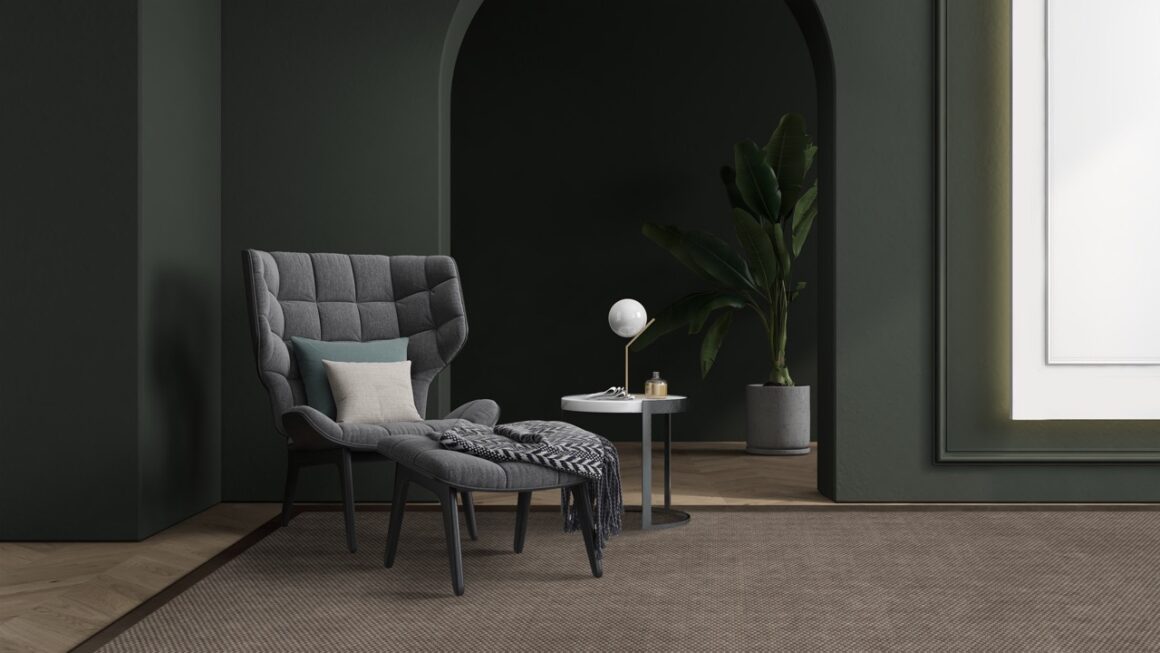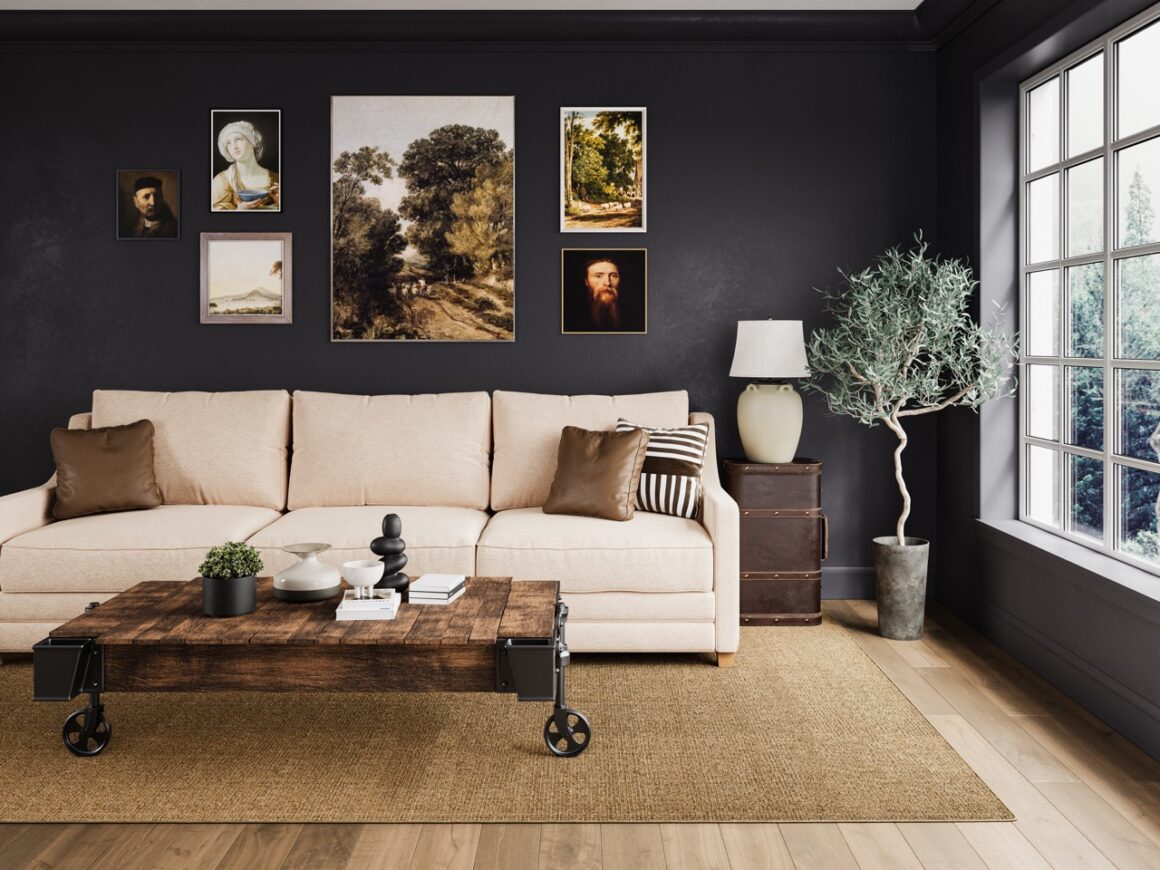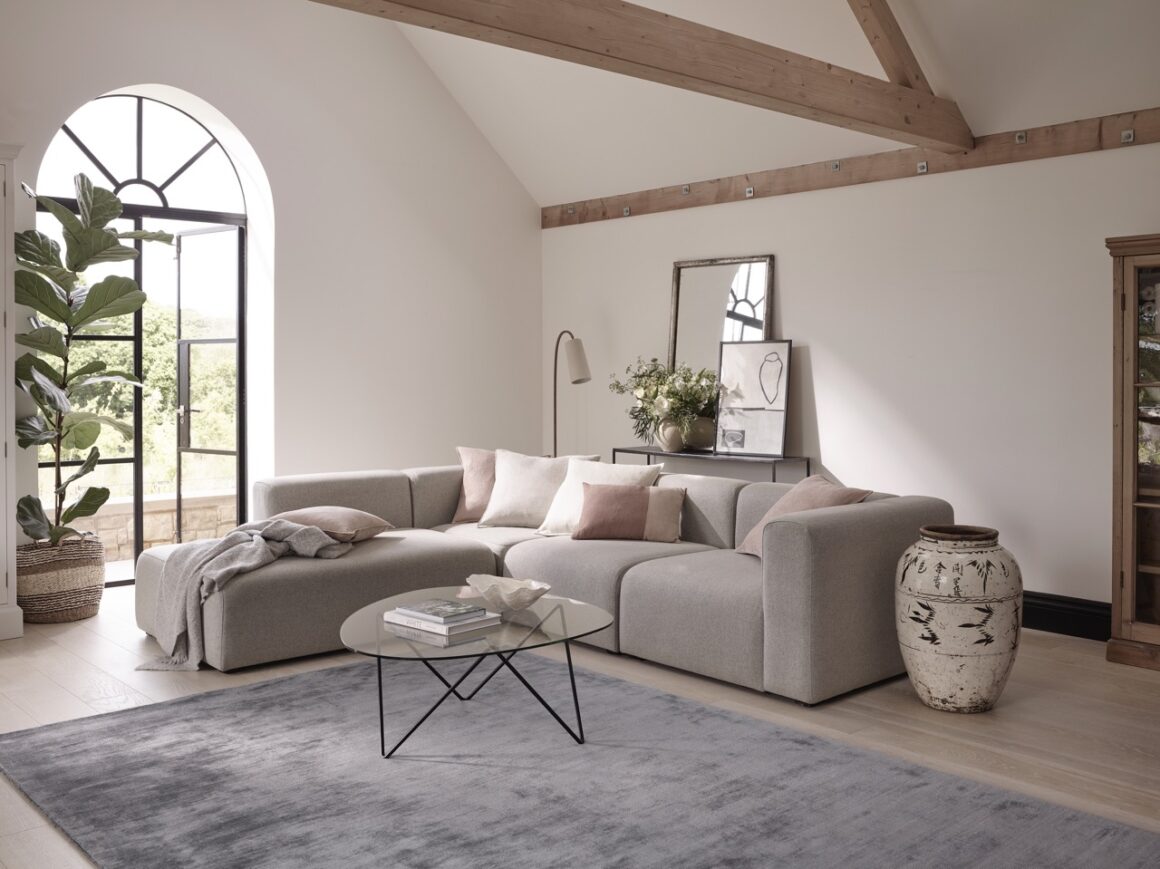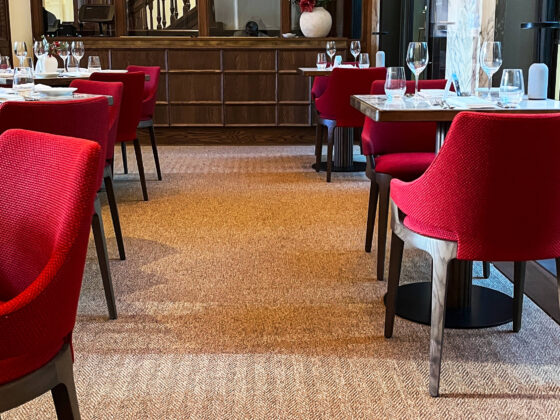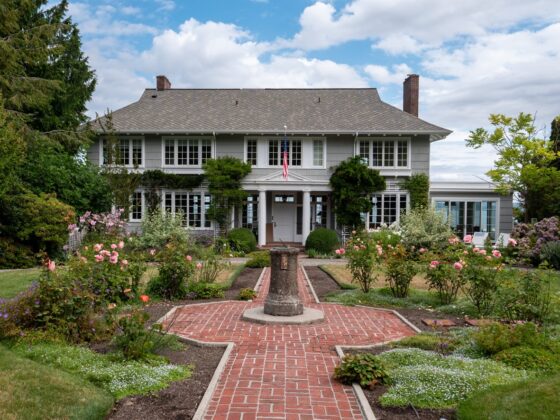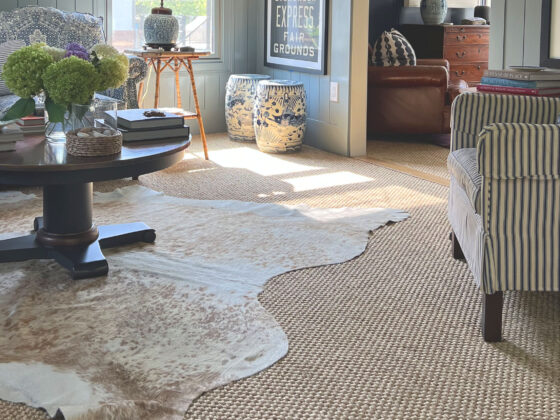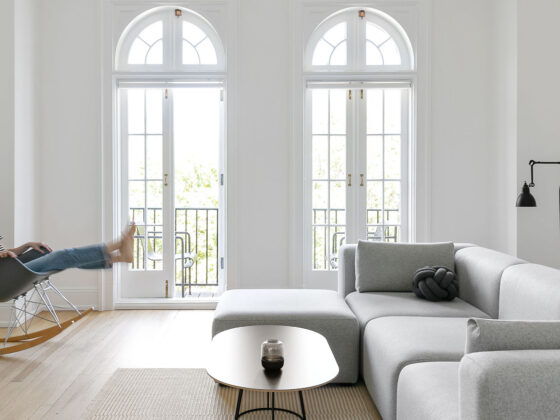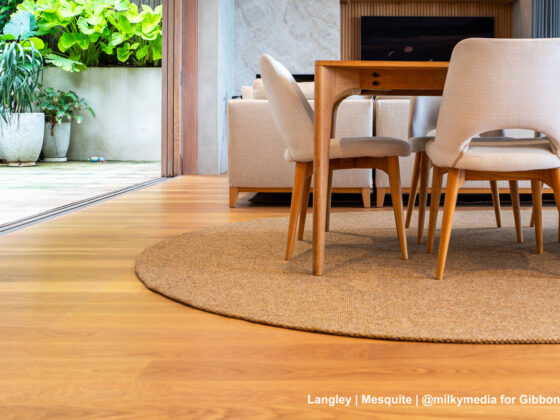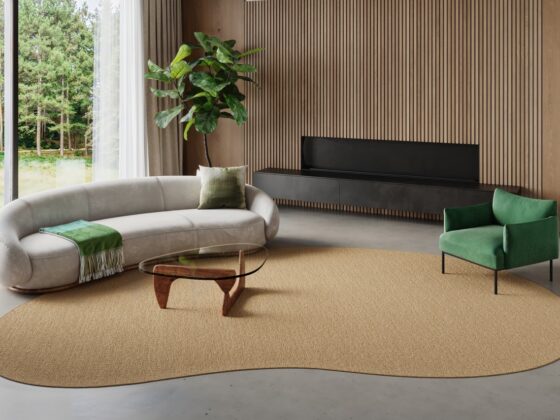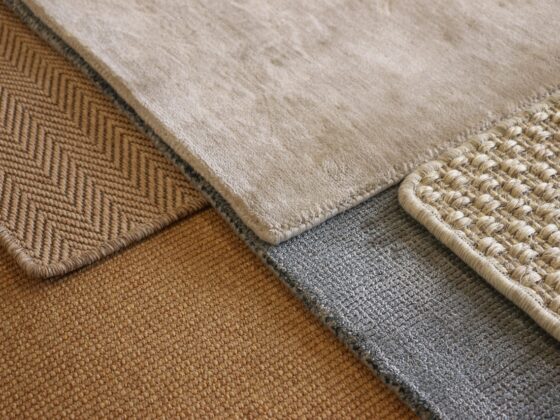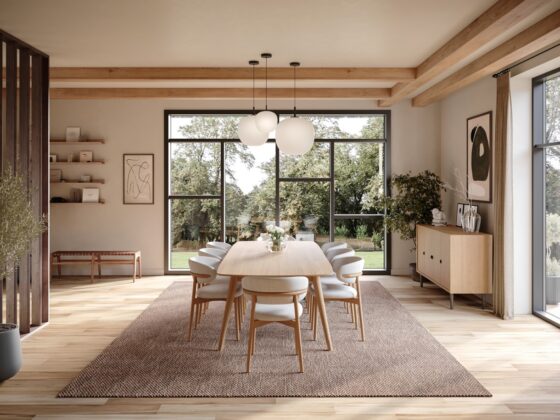Published February 2024 | Updated June 2025
The goal of any interior design effort is to create a space that exudes harmony and reflects your style. In our homes, we want our favorite rug to complement other elements in the space, like the floor or wall colors. Whether you’re dealing with deep green walls, elegant dark wood floors, or contemporary grey floors, understanding the principles of color pairing will help you find the ideal rug colors for your home. In this post, we talk you through interior designers’ best tips for making the perfect match.
Consider the Color Wheel
A great first step in planning your rug or carpet color is to study the color wheel. Do you have a main color that you are designing around? Once you know your focus color, use a color wheel to find complementary or analogous colors. Complementary colors are opposite each other on the wheel and create a vibrant look if you want some contrast. Analogous colors are next to each other and form a sense of flow and harmony in a space.
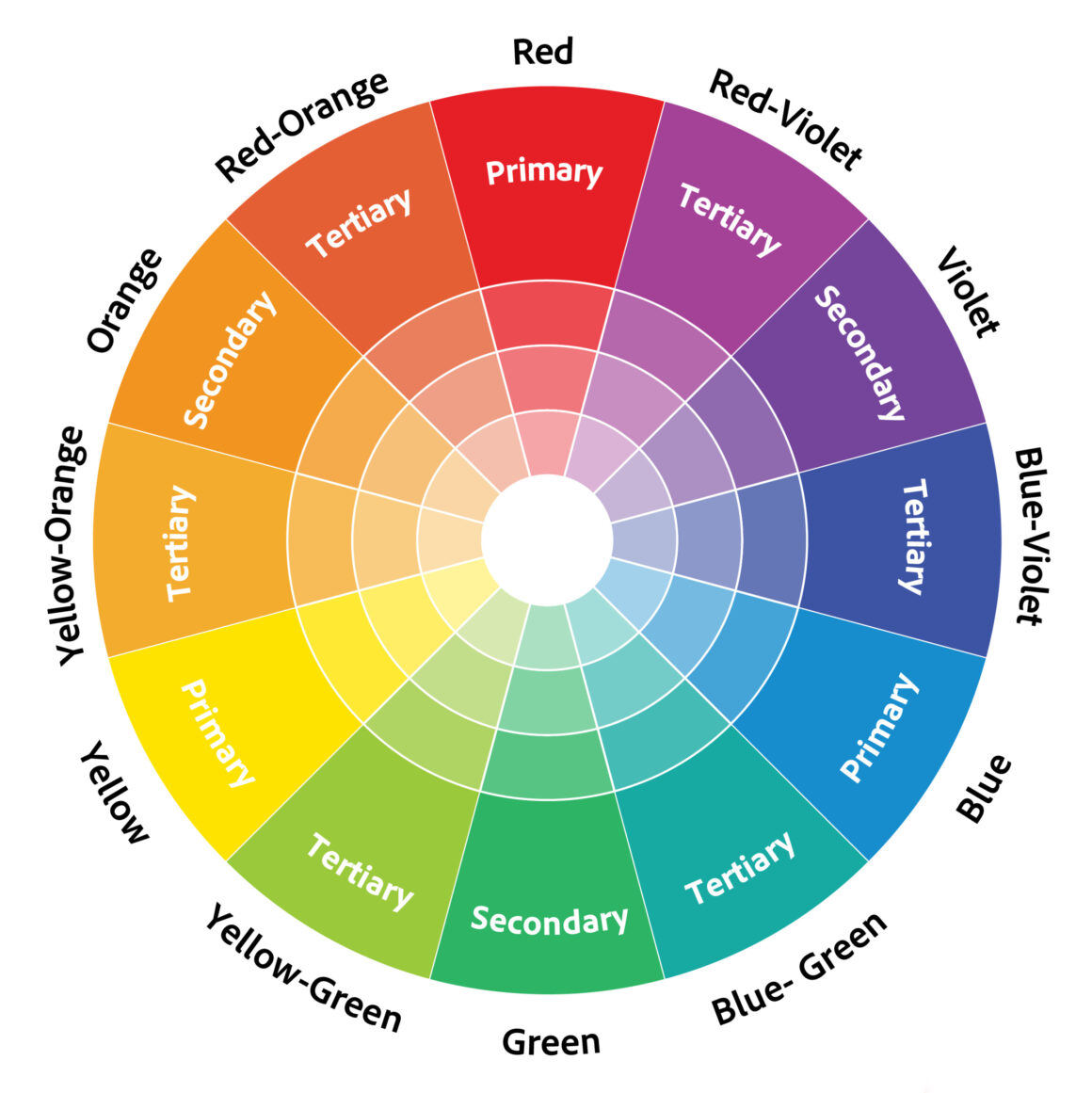
For a monochromatic yet layered composition, look at your wall or floor color and select analogous hues that match but differ slightly in tone or shade. Complementary colors are perfect for accent colors—they can either blend cohesively with the other elements in the room or juxtapose to bring liveliness and dynamism into the space.
Top interior designers trust Curran & sisalcarpet.com to deliver elegant area rugs, stair runners, and custom carpeting that balance beauty with performance. See how our carpets elevate residential spaces in our showcase of Residential Interior Designer Projects.
Rug Color + Wall Color
Should your rug and wall color be similar? Or will a bit of contrast bring depth to the space? Ultimately, it comes down to what you like and there are no hard and fast rules. Nonetheless, here are some tips to help you pair your rug color with your walls:
Partner with Neutrals
Maybe you prefer a neutral, soothing colorscape or you want neutrals to balance other colorful elements in your space. Either way, neutrals shades are beloved for a reason. If your walls are brightly colored or very bold, a neutral-colored rug (beige, grey, white, or black) balances the room without competing for attention. Conversely, if your walls are neutral, a richly colored rug is a welcome bit of contrast.
For a tonal landscape, your rug shouldn’t necessarily match the walls or the couch color exactly. Instead, look for similar colors in slightly different shades to create a unified look. To further develop the look, add textures into the landscape, like rugs with similar shades but chunky yarns or intriguing patterns.
Bring in the Bold
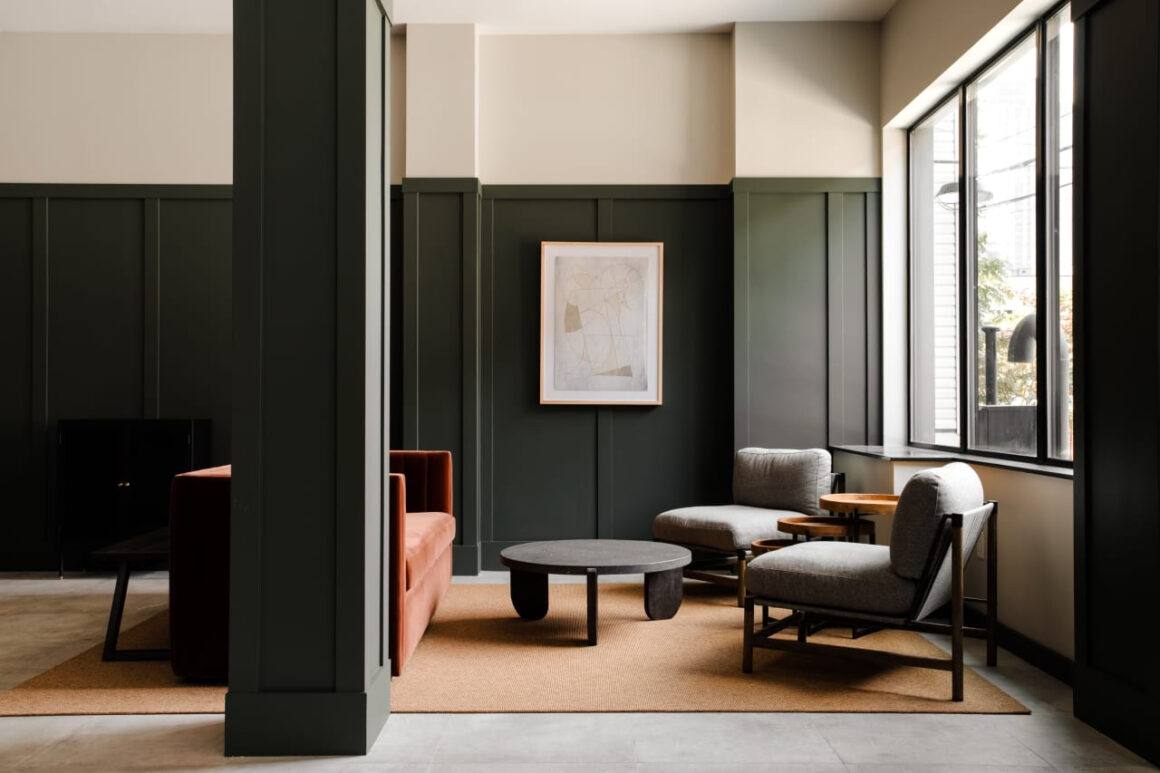
Is your wall painted a glorious green hue or a moody blue? Colorful walls, or even just an accent wall, add visual dimension and character to rooms. Using green walls as an example, let’s walk through some pairing options:
- For a natural look, green walls paired with rugs with earthy tones like browns, beiges, or muted oranges ground the space.
- A corresponding deep blue or purple rug heightens green’s richness for a sophisticated, elegant ambience.
- For a dynamic yet playful look, a rug with complementary red or pink hues creates an eye-catching contrast that energizes the space.
These suggestions work for any colored wall and depend on the mood or style you want to put forth. You can play off the wall color with colorful rugs or contrast it with neutral hued rugs – the choice is yours.
Rugs with Pattern and Texture
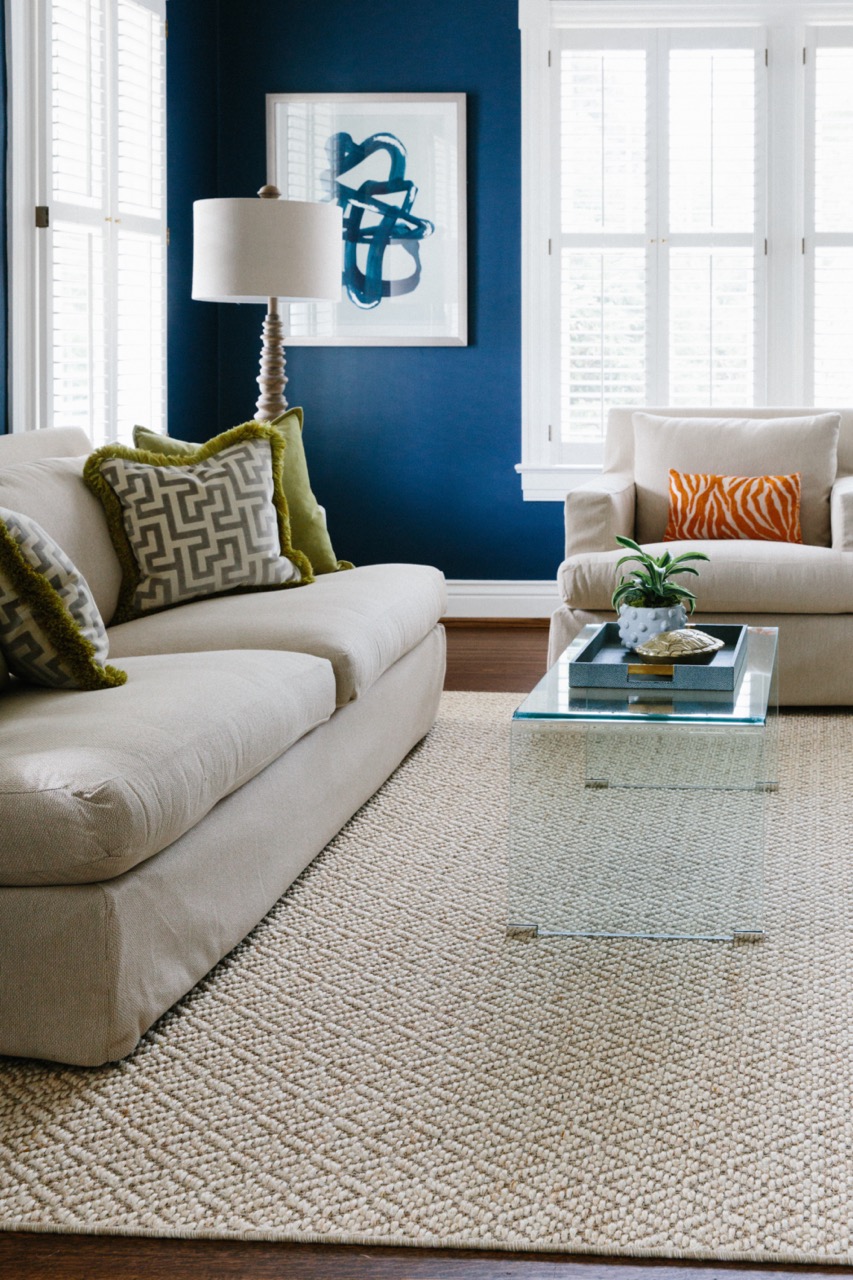
If your walls are a solid color, consider a rug with a pattern or texture to add visual interest. If your walls have wallpaper or a busy pattern, a solid-colored rug is less likely to compete with the walls. In a room with a few complementary colors in play, a multicolor rug with a pattern is a great way to unify all the colors in your scheme.
Principles of Pattern
A patterned rug or carpet that complements your wall color creates a cohesive, intentional design.
Visual Balance Choose a rug with accents that echo your wall color for a harmonious look, or opt for a contrasting pattern to add depth and visual interest while maintaining balance in the space.
Mix Scale Large scale repeats add movement to your floors and won’t compete with smaller scale patterns elsewhere in your space. Alternatively, a pattern with a delicate motif or a soft focus blends well with bolder elements in a room but still makes its own subtle statement.
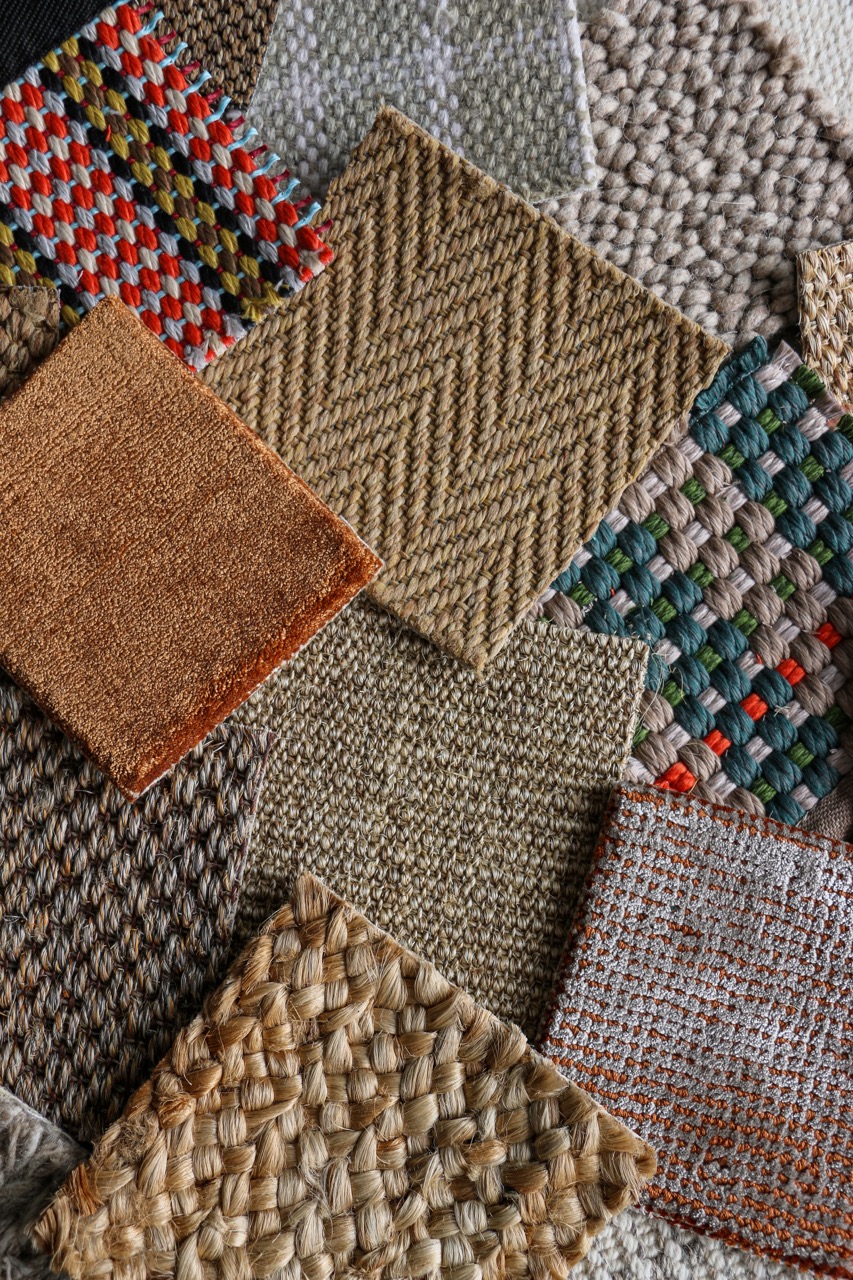
⇒ Use Artwork as a Muse: Your existing art collection might be a launching pad for ideas. A Maximalist style with bold, bright artwork welcomes expressive, bold rug styles; alternatively, a muted, solid rug color might be the perfect balance to statement art pieces. Dark and dramatic art paired with a rug in a deep tone sets a moody stage.
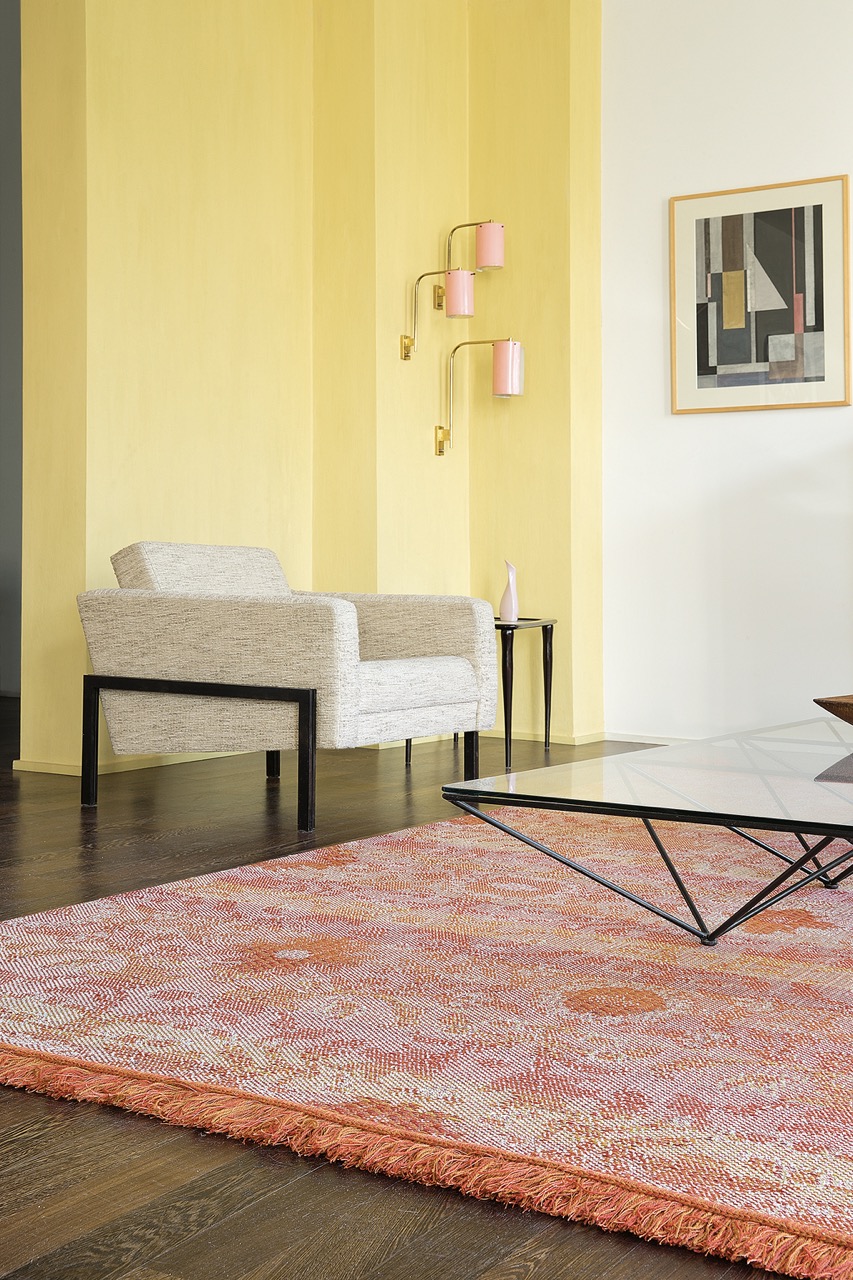
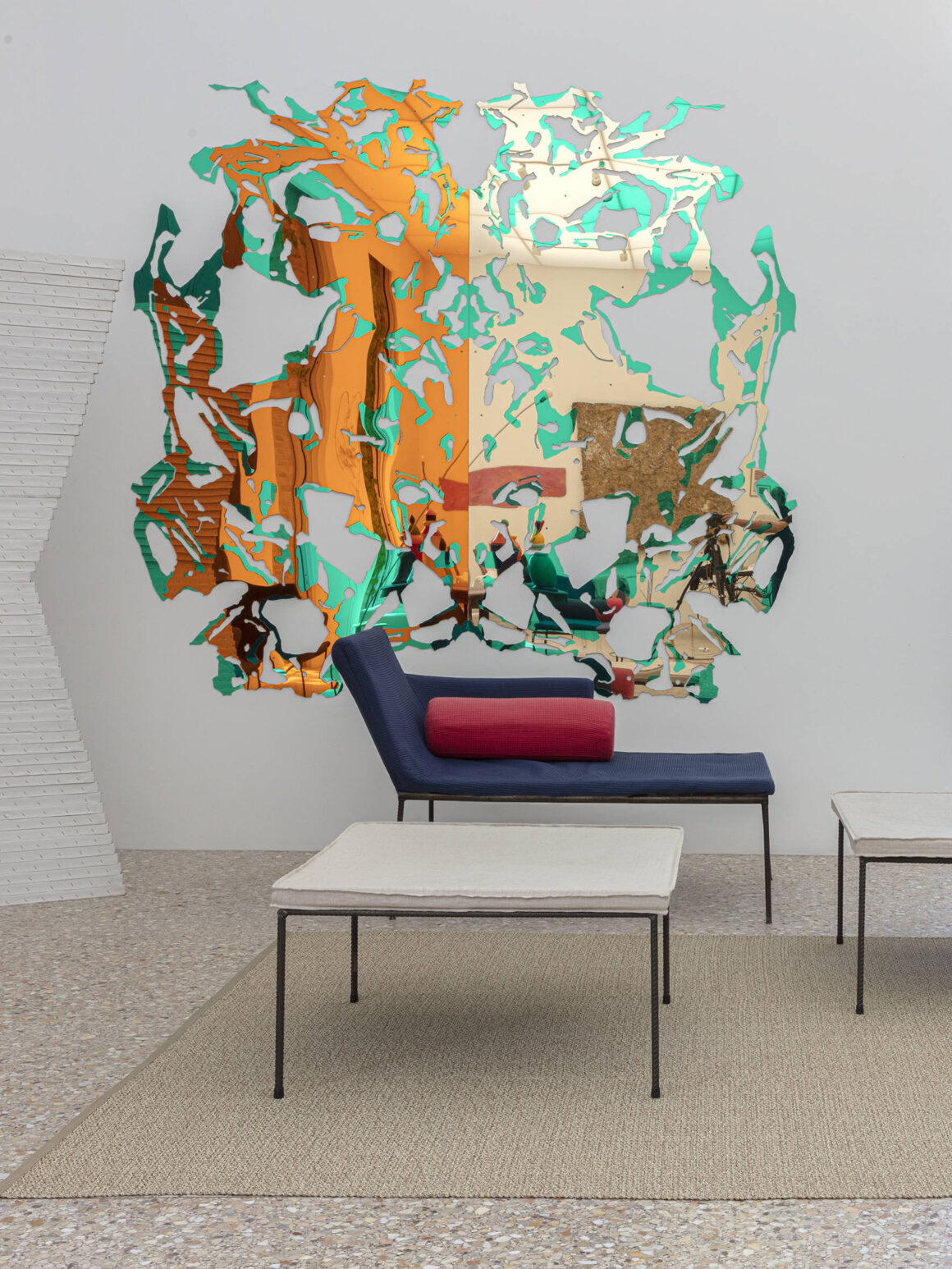
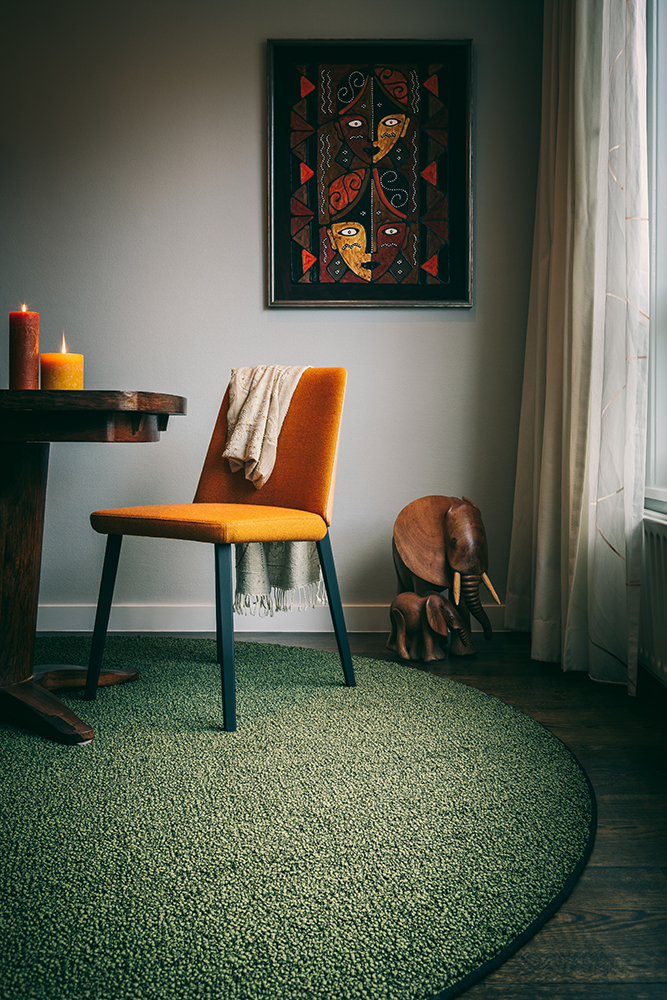
Ultimately, the best rug color choice is one that reflects your personal style and makes you feel comfortable in your space. White walls or blue walls, with these tips you can style a space that’s balanced and cohesive.
Rug Color + Floor Color
Rugs with Dark Wood Floors
Dark wood floors provide a rich, warm foundation and give a sense of depth and luxury. The key to pairing a rug with dark wood floors is to create balance without overwhelming the space. Light-colored rugs in shades of cream, beige, or light grey offer a stunning contrast that brightens the room and highlights the beauty of the dark wood. If you prefer a more cohesive look, consider a rug with deep, warm colors like burgundy or navy, which complements the wood tones while adding a layer of sophistication.
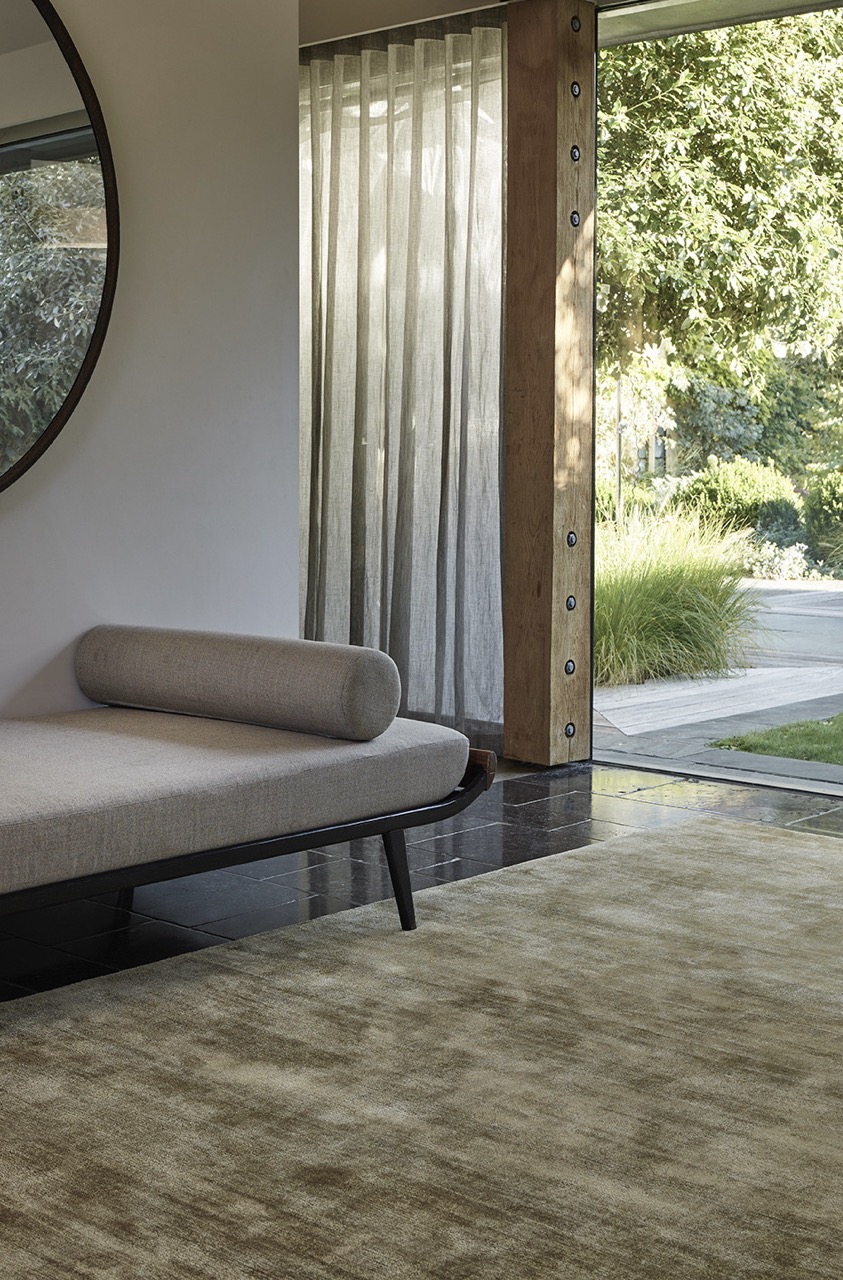
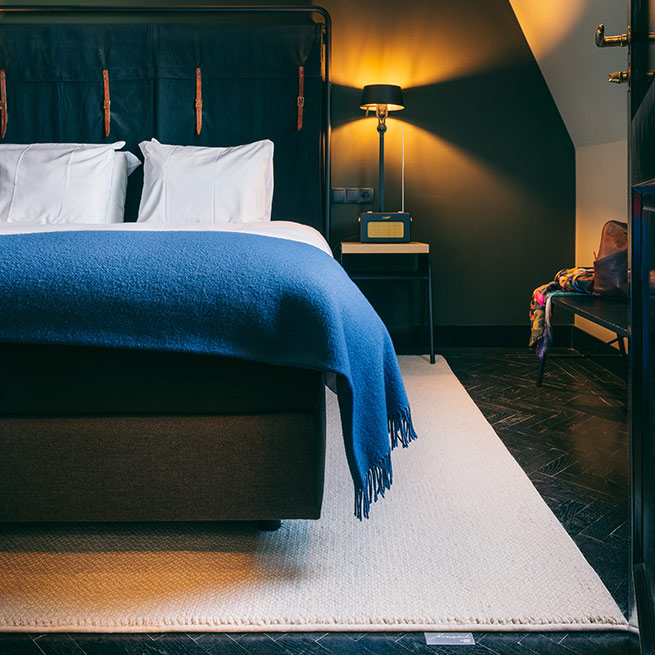
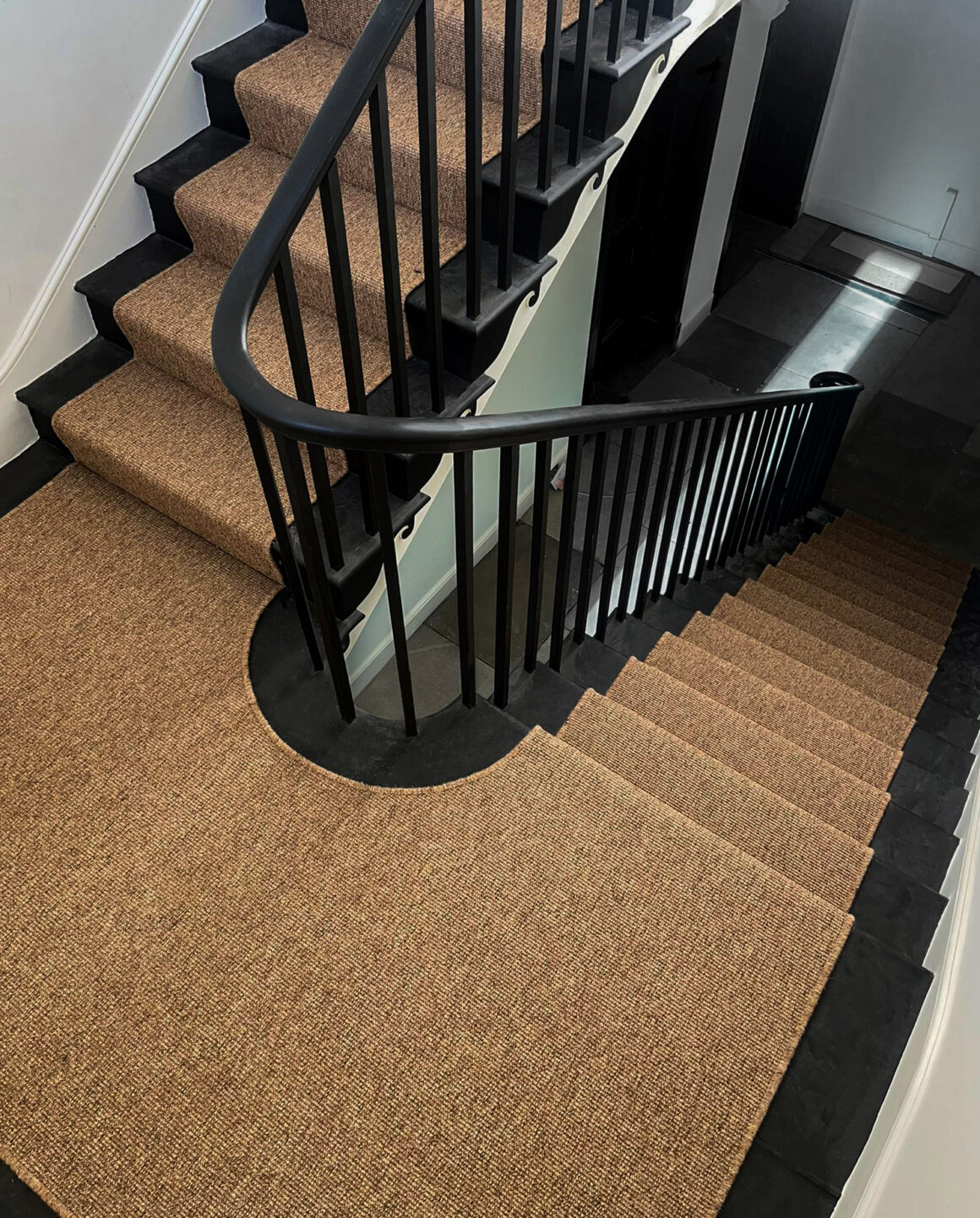
Going Grey
Grey floors are celebrated for their versatility and modern appeal, providing a neutral base that can support a wide range of rug colors. To keep the space feeling open and airy, consider a rug in a lighter shade such as pale blue, soft pink, or lavender, which gently contrasts with the grey and adds a splash of color. For a more dramatic effect, a rug in a bold color like mustard yellow, emerald green, or royal blue creates a focal point that stands out against the grey backdrop. Patterned rugs that incorporate grey tones also tie the space together, offering visual interest without overwhelming the room.
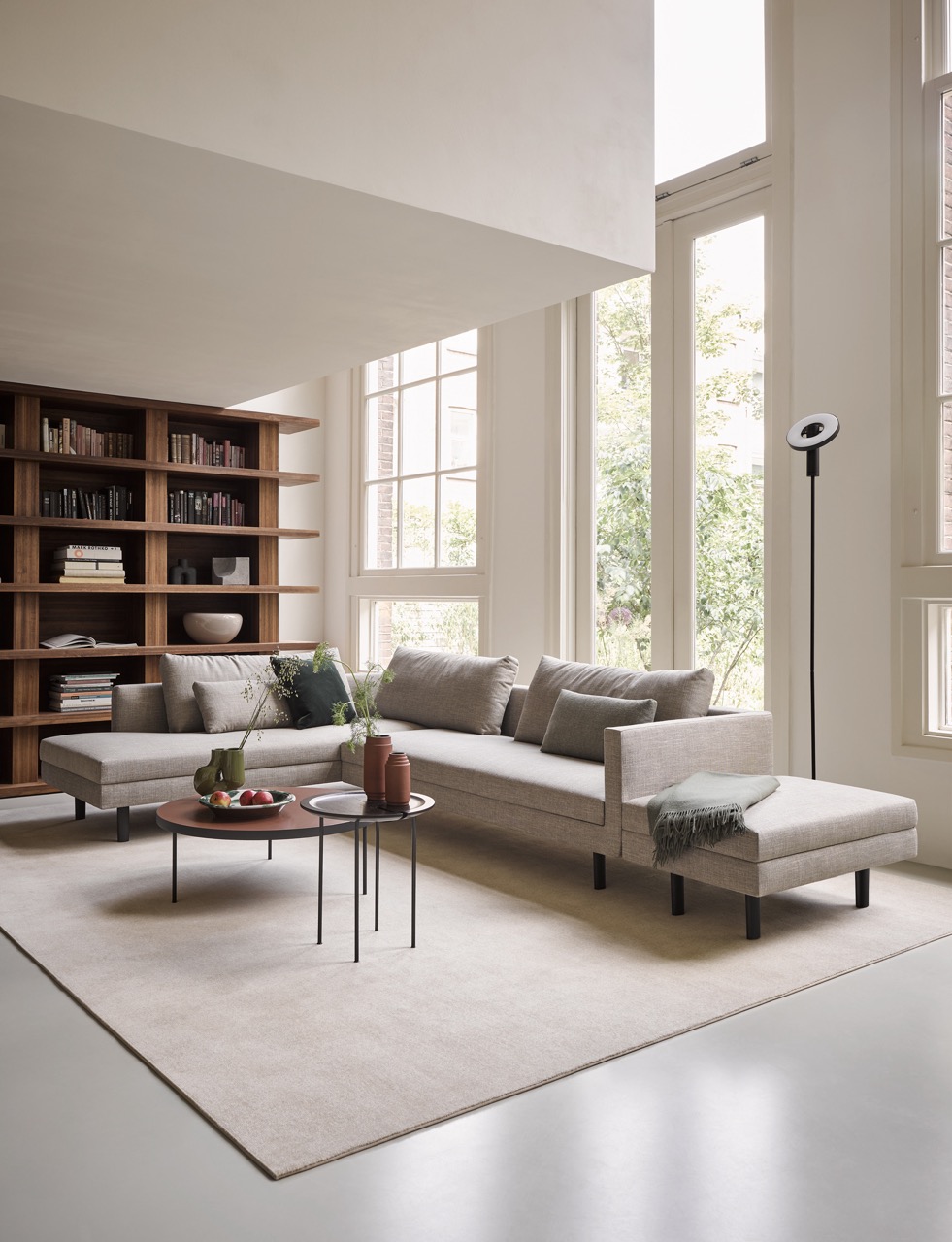
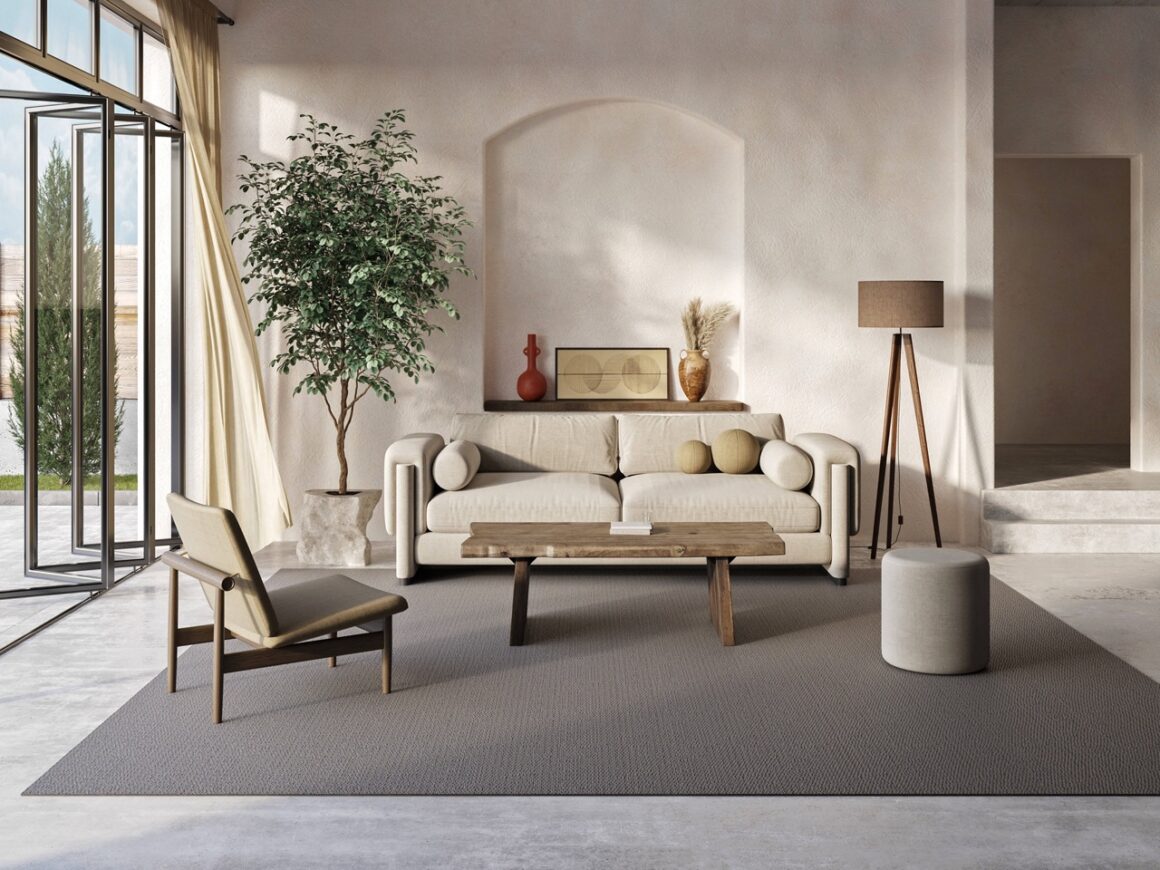
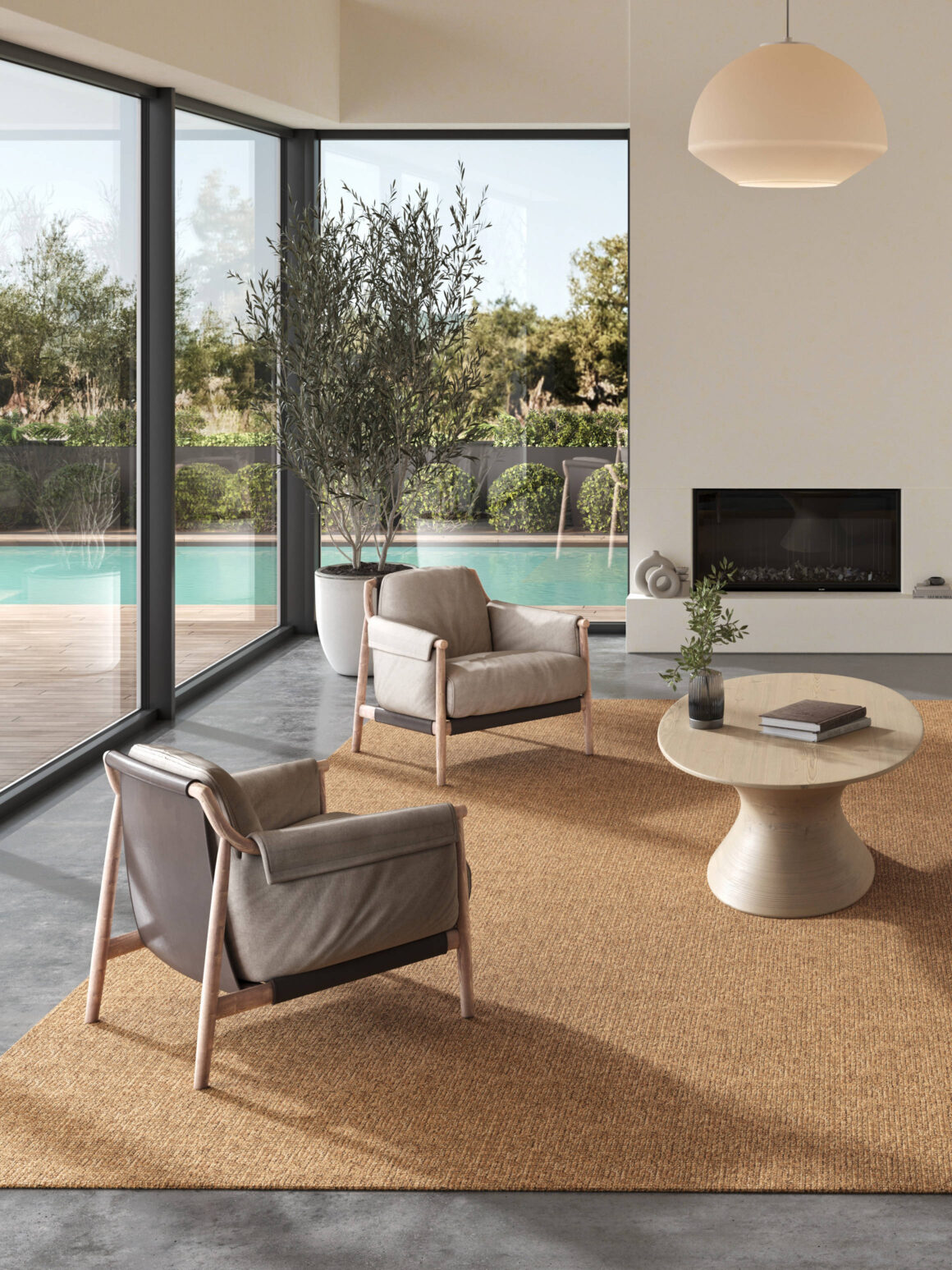
Rugs with Light Hardwood Floors
Light hardwood floors bring warmth and natural beauty to a room and create a bright and welcoming atmosphere. When selecting a rug for light hardwood floors, aim for a color that complements the wood’s natural hue without blending in too closely. Rugs in mid-tone colors like dusty rose, sage green, or soft teal add a soothing decorative layer. For a more striking contrast, consider darker hues such as charcoal, navy, or chocolate brown that anchor a space and add a touch of drama.
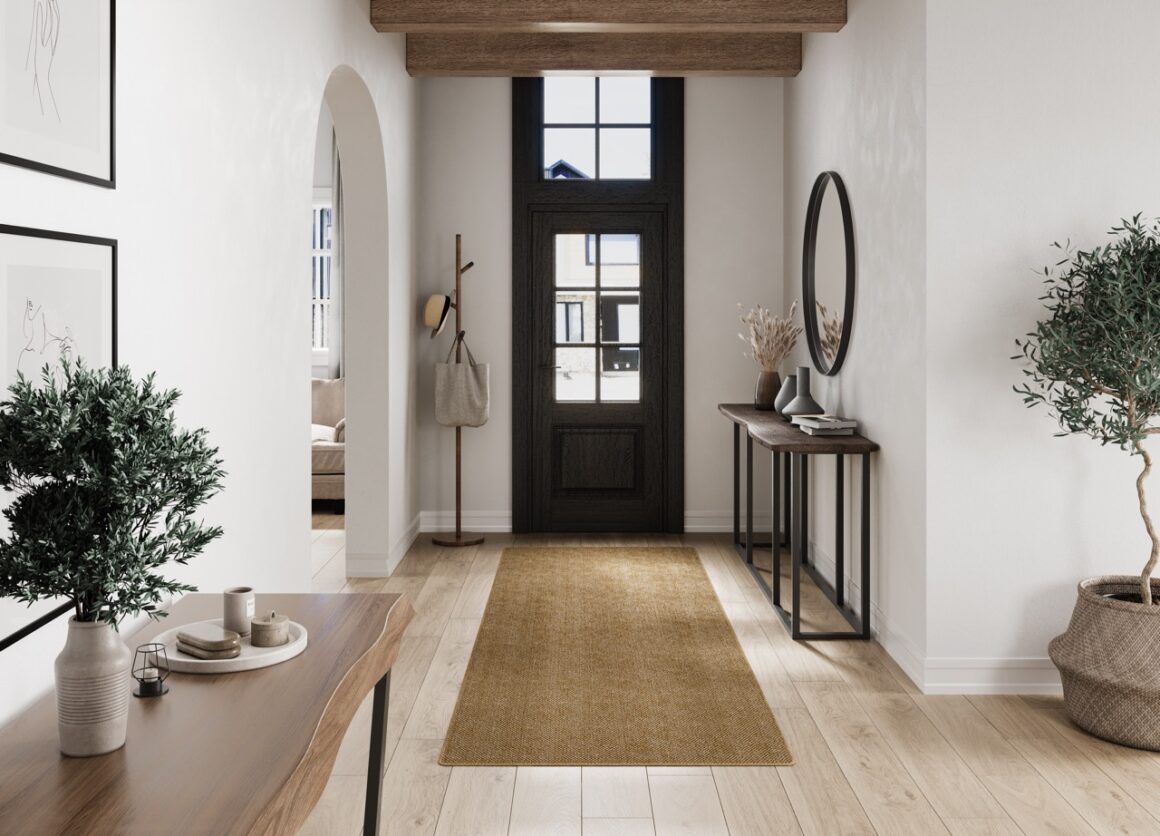
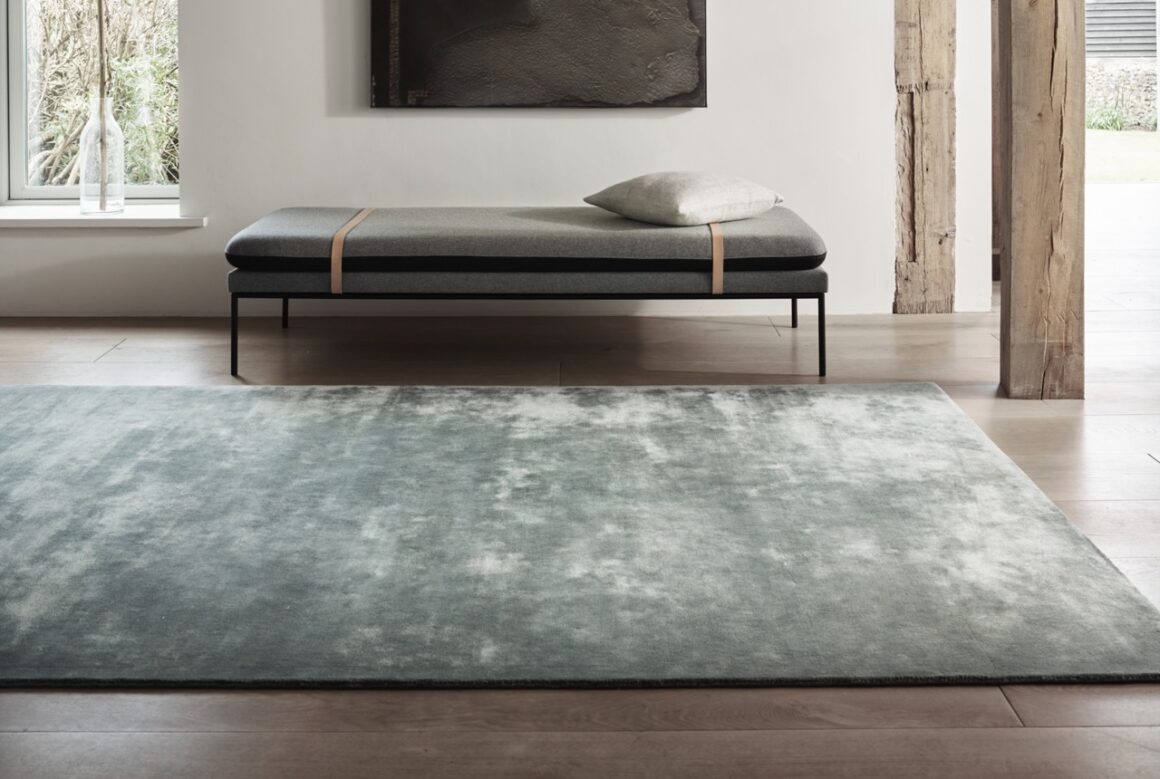
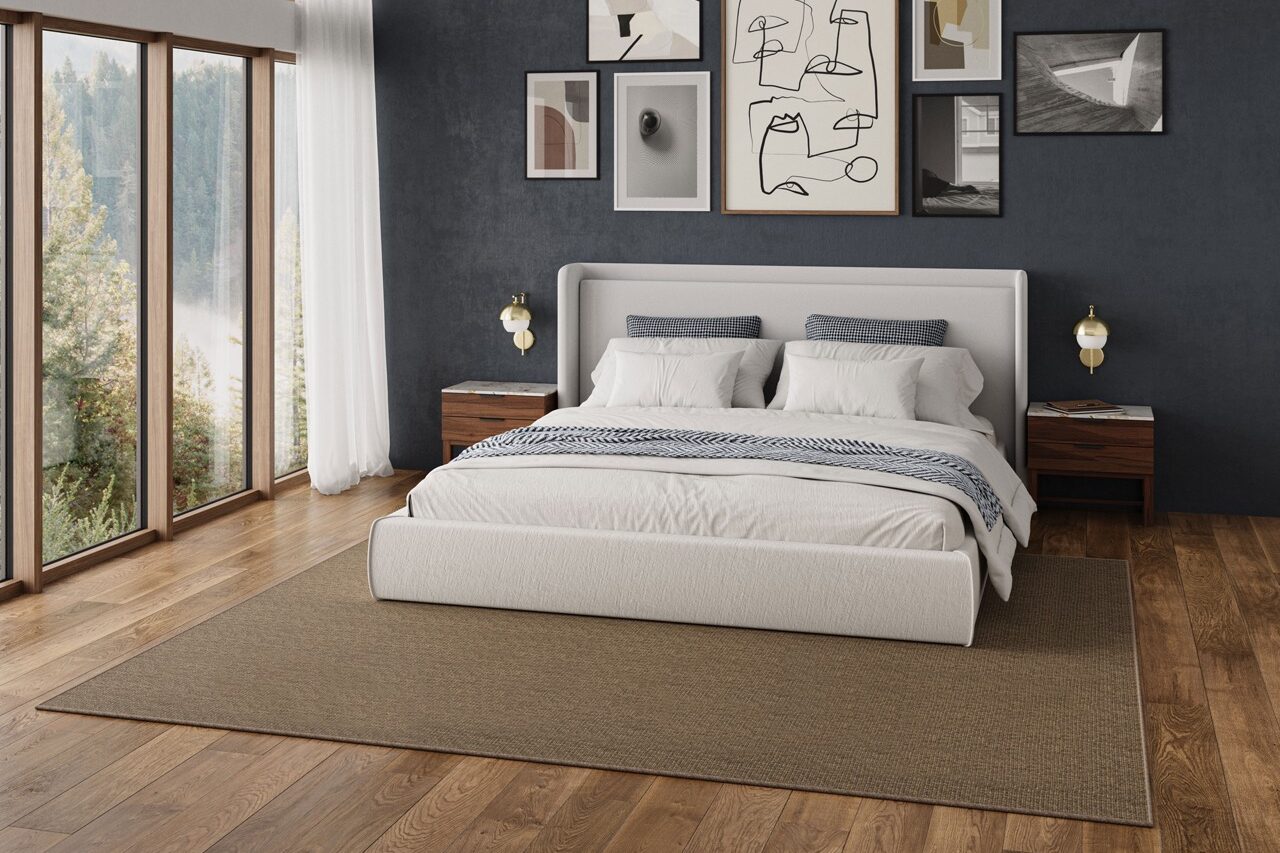
Final Words
The right rug or carpet color properly paired with your floor or wall colors is an essential element for nailing your desired look. By considering the existing colors and the atmosphere you wish to create, you can select a rug that not only complements your space but also enhances its aesthetic appeal and functionality. Remember, the goal is to achieve balance and harmony, allowing each element of your room to contribute to a cohesive and inviting living space.
Need more help picking the right rug color?
Head over to “How to Choose a Rug Color” and take the quiz.

